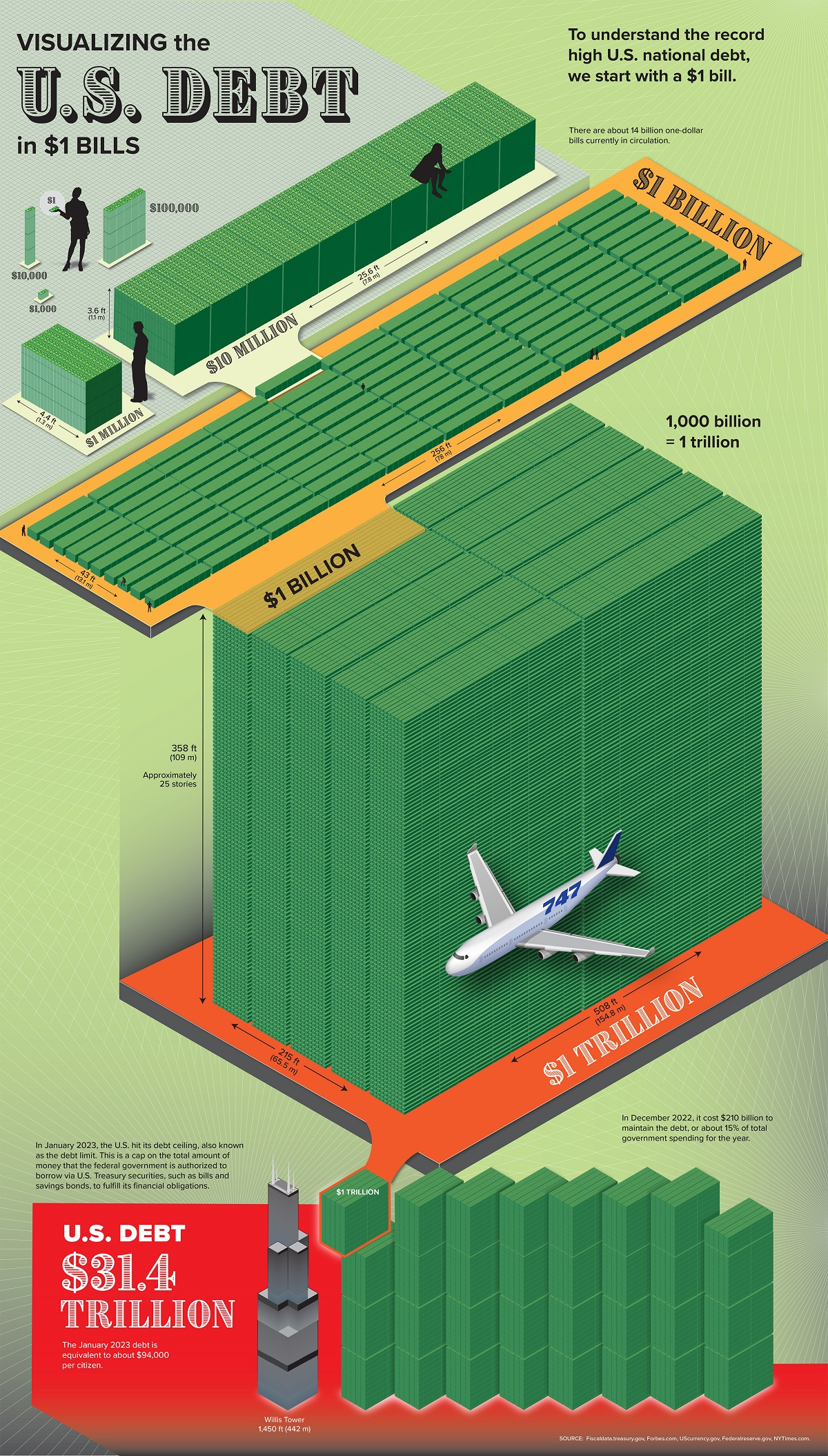Taps Coogan – April 28th, 2023
Enjoy The Sounding Line? Click here to subscribe for free.
The following is an excerpt from an article reposted from Visual Capitalist.

Can you picture what $31.4 trillion looks like?
The enormity of U.S. government debt is hard for the average person to wrap their head around. For instance, compared to the median U.S. mortgage, the current level of federal debt is 230 million times larger.
In this graphic, Julie Peasley shows how many one-dollar bills it would take to stack up to the total U.S. debt of $31.4 trillion.
How Did U.S. Debt Get So High?
U.S. national debt is how much money the federal government owes to creditors. When the government spends more than it earns, it has a budget deficit and must issue debt in the form of Treasury securities.
The U.S. has run a deficit for the last 20 years, substantially increasing the national debt. In fact, according to the Department of the Treasury, the current debt is $31.4 trillion.
Stacked up in one-dollar bills, the U.S. debt would be equivalent to almost eight of Chicago’s 110-story Willis Tower.
| Year | Outstanding Debt | Year-Over-Year Increase |
|---|---|---|
| 2023* | $31.4T | 2% |
| 2022 | $30.9T | 9% |
| 2021 | $28.4T | 6% |
| 2020 | $26.9T | 19% |
| 2019 | $22.7T | 6% |
| 2018 | $21.5T | 6% |
| 2017 | $20.2T | 3% |
| 2016 | $19.6T | 8% |
| 2015 | $18.2T | 2% |
| 2014 | $17.8T | 6% |
| 2013 | $16.7T | 4% |
| 2012 | $16.1T | 9% |
Source: Fiscal Data. Debt for 2023 is as of January, with the year-over-year increase reflecting the growth from October 2022 to January 2023. October is the start of the fiscal year for the U.S. government. Debt includes both debt held by the public and intragovernmental holdings.
The last time the government had a surplus was in 2001, when debt rose only 2% due to interest costs. Since then, the largest jumps in U.S. debt have been during the Global Financial Crisis—which saw three straight years of double-digit growth rates—and in 2020 due to trillions of dollars of COVID-19 stimulus.
U.S. federal debt rises during recessions because government revenue, primarily composed of taxes, decreases. At the same time, the government increases spending to help stimulate an economic recovery.
And in today’s case, the U.S. is facing additional financial issues. As the country’s senior population grows and people live longer, this puts pressure on programs that serve older Americans such as Social Security. Healthcare is becoming more expensive and is the second-fastest growing part of the U.S. budget.
Would you like to be notified when we publish a new article on The Sounding Line? Click here to subscribe for free.


Another interesting calculation:
if we put the global warming hoax 50T$ in one dollar bills next to each other, can it cover the whole surface of the earth.
Or hint how high altitude of a bubble made out of 1 dollar bills can that $50T make?